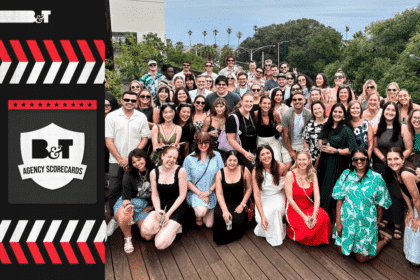Advertising has been talked about a lot recently across several mediums and platforms. With ads coming to Netflix in the foreseeable future and rumblings of adverts being introduced to free-to-play games on Xbox, it appears that we sit on the brink of something of an advertising revolution. And yet, of all the platforms you would think are being brought up in these discussions, there’s one that’s hiding in plain sight – mobile gaming.
We can all picture it in our minds: a person sitting at the bus stop playing one of the infinite clones of Flappy Bird out there while a huge banner ad stretches across the entire top of the screen. Some ad formats in mobile games have a reputation for being distracting, and there’s certainly a degree of stigma that has surrounded the field for many years. But all that could be set to change with the arrival of blended in-game ads and InMobi.
InMobi’s introduction of blended in-game advertising could change the way in which gamers interact with ads and assist advertisers in growing their audience in the process. With ads appearing in an integrated form rather than breaking the immersion of the user, it allows for an ad to make a positive impact in quite an innovative way. It’s a bold new world, for both advertisers and users.
So what are the important points you need to know to understand this new world of advertising in mobile gaming? What are the outdated opinions related to it, and what are the benefits to this new system? In this article, we’ll help you understand the key takeaways from InMobi’s blended advertising and how it can be positively used in mobile gaming. Think of it as an all-round guide to be in the know as the advertising revolution continues gaining traction and makes its mark within mobile gaming!
Brand Safety and Verification is Real
With the sheer number of apps and games available on both the Apple store and Google Play, you would be forgiven for thinking that designers can sneak just about anything onto the mobile market. The truth is, that simply isn’t true: verification is alive and well within the mobile gaming industry, both thanks to the tech giants running the stores and the advertised content itself.
Given how big Apple and Google both are in the tech industry, it’s in their best interests to maintain a level of quality in the products available on their digital marketplaces, and the ads shown are required to reflect that interest as well. Additionally, third-party verification solutions for traffic quality already work for in-game ads, and viewability support is increasingly expanding.
What does this mean for advertisers? With third party verification in place, brand-safe categories and a lack of user-generated content, each ad that shows up in a mobile game is genuinely safe. The concept of mobile ads being unsafe is in fact a misconception, and like many gaming-based misconceptions is set to change in the public eye.
Mobile Gaming Represents Untapped Market & Revenue
One of the big reasons social media gets used as a major outlet for advertising is the sheer density of the market involved – roughly 3.5 billion users can be found across social media platforms, making for a massive potential audience for your ad. What some people don’t realise is that the market for mobile gaming is similarly large, but far more untapped – according to Statista, there are more than 2.6 billion mobile gamers globally, yet the market remains relatively unused by major advertising groups.
There’s also no shortage of money to be made here – roughly $93 billion is spent on social media advertising annually, whereas a meagre $4.5 billion gets dropped on mobile gaming advertising. With such a rift in spending as it currently stands, advertisers that do choose to lean on InMobi’s in-game ads have a strong chance at getting their campaigns seen and shared by this large-scale audience.
User Experience is Blended – In an Immersive Way, Not a Food Way
So what does ‘blended’ mean in the context of in-game ads? InMobi’s mobile gaming ads are designed to lead to a far more natural experience for the user than large, intrusive banners that remove the player from the gaming environment. These are advertisements that exist in the games themselves, in the forms of street signs, billboards and the like. If you’re drifting around in a racing game, you’ll see ads on the track side just like you would in an actual F1 race. If you’re playing a shooter with your mates, you’ll see ads on the sidewalk reminiscent of those found in the real world.
The keyword here is immersion. Gamers are more likely to remember these ads because they remain immersed in their games while viewing them, so it doesn’t detract from the enjoyment of the experience. Gamers can remain fully involved in the world they’re in while still gaining the potential benefits of the advertising, in the same way one would experience an ad while walking down the street. This immersion then leads to better brand recognition and positive responses towards advertised content.
The proof is, thankfully, in the pudding on this one. A recent case study done by Castrol trialled how a test group from the Philippines aged 18 to 44 responded to blended advertising in a mobile racing game. In just a single month, Castrol were able to confirm that 70 per cent of respondents recalled seeing the blended in-game ad, and 75 per cent recorded an action after viewing the ad.
The best part of all of this? Advertisers don’t even need to create an entirely new creative for a project like this – existing campaigns can be inserted straight into InMobi’s Blended in-game advertising thanks to programmatic activation.
Metaverse Begone! Gaming is the Way Forward
If you’ve been around in the ad space over the last six months or so, you’ve definitely heard of the Metaverse. This concept – a digital space that can be used to meet with people, have conversations, create a digital representation of yourself of just have a play – is as intriguing as it is futuristic, and advertisers have been jumping on the possibility to get to grips with the concept. The thing is, such a space already exists. It’s called gaming.
That’s right – gamers have already been using massive digital spaces to connect with one another for over a decade. Games like Minecraft, League of Legends and Fortnite have massive groups of players interacting with one another on a daily basis, using digital avatars and having fun. There’s a perfectly reasonable interpretation of what advertising in the Metaverse will be like, and it’s right at everyone’s fingertips, despite what some of the backdated stereotypes may tell you.
So don’t fear the gamers! They represent a section of the advertising market that has yet to be fully cracked, and if your company is hoping to get into the Metaverse wave happening at the moment, then gaming can be a fantastic on-ramp for exactly that.
The Target Audience Can Be Whoever You Want!
There existed a stereotype around gamers, including mobile gamers, pretty much right up until the pandemic hit. The image people would conjure up was always younger men, likely between 15 and 30, addicted to energy drinks and salty chips and snacks. Make no mistake, it wasn’t true then and it isn’t true now, but the pandemic has allowed for the zeitgeist surrounding it to disperse somewhat.
Gaming is more mainstream than ever before, and mobile gaming represents a level of outreach that is genuinely untapped. Men and women, people of a huge variety of age groups and backgrounds – if your advertising has a target market, it can likely be found within the gaming world, and blended ads can easily help you to connect with them.
The Public is Already Aware
Despite in-game advertising being a relatively new area, people are aware of its existence and notice it in their gaming. A recent study showed that 70% of American respondents were already aware of brand placements within the games they played, which adds to the idea that the in-game advertising industry is still relatively untapped given the massive potential of it as a format.
So, to recap, blended advertising is easy to setup, can be done with existing campaigns and doesn’t require additional creatives, represents a widely diverse and hugely untapped market, and can see massive positive responses in your target audiences. Sounding good? Then make sure to check out InMobi today, or reach out to them at [email protected].









